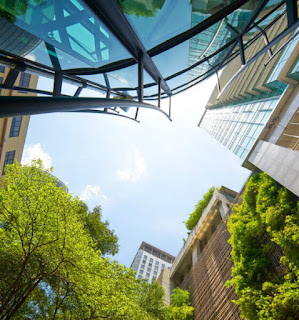Transforming Commercial Buildings into Sustainable Spaces: A Guide for Modernization
As the world increasingly embraces sustainability, the transformation of commercial buildings into eco-friendly spaces has become imperative. From reducing carbon footprints to enhancing energy efficiency, sustainable buildings offer multifaceted benefits. However, transitioning existing structures into sustainable spaces requires careful planning and execution. This guide outlines essential steps to facilitate the conversion of commercial buildings into sustainable havens. https://leeeb.ca/
-Conduct a Comprehensive Audit:
Begin by assessing the current state of the building. Identify areas where energy consumption is high and inefficiencies exist. Conduct an energy audit to pinpoint potential upgrades and determine the building's overall sustainability performance. Evaluate factors such as lighting, heating, ventilation, air conditioning (HVAC) systems, insulation, and water usage.
Set Sustainability Goals: Establish clear objectives for the transformation process. Define targets related to energy efficiency, water conservation, indoor air quality, and waste reduction. Setting specific, measurable, achievable, relevant, and time-bound (SMART) goals will guide decision-making and track progress effectively.
-Implement Energy-Efficient Technologies:
Upgrade outdated systems with energy-efficient alternatives. Install LED lighting, which consumes significantly less energy and has a longer lifespan than traditional lighting. Retrofit HVAC systems with programmable thermostats, energy recovery ventilation, and high-efficiency equipment to minimize energy consumption while maintaining comfort levels.
-Enhance Building Envelope: Improve the building envelope to optimize insulation and minimize thermal bridging. Seal air leaks around windows, doors, and other openings to prevent heat loss or gain. Consider adding insulation to walls, roofs, and floors to regulate indoor temperatures efficiently. Utilize sustainable materials such as recycled insulation or natural fibers to reduce environmental impact.
-Integrate Renewable Energy Sources:
Incorporate renewable energy systems to reduce dependence on conventional power sources. Install solar panels on the roof or façade to harness clean energy from the sun. Explore other renewable options like wind turbines or geothermal heat pumps based on the building's location and feasibility. Implement energy storage solutions such as batteries to store excess energy for later use.
-Optimize Water Management:
Implement water-efficient fixtures and systems to minimize water consumption. Install low-flow faucets, toilets, and showers to reduce water wastage. Incorporate rainwater harvesting systems to collect and reuse rainwater for irrigation or non-potable uses. Utilize greywater recycling systems to treat and repurpose wastewater for flushing toilets or landscaping.
-Prioritize Indoor Environmental Quality:
Create a healthy and comfortable indoor environment by focusing on indoor air quality (IAQ) and occupant comfort. Use low-VOC (volatile organic compound) paints, adhesives, and furnishings to minimize indoor air pollution. Maximize natural ventilation and daylighting to reduce reliance on mechanical systems and enhance occupant well-being. Introduce biophilic design elements such as indoor plants to connect occupants with nature and improve productivity.
-Implement Sustainable Practices:
Promote sustainable practices among building occupants to maximize the building's environmental performance. Encourage recycling and waste reduction initiatives by providing convenient recycling bins and composting facilities. Establish green cleaning protocols using eco-friendly cleaning products and practices. Educate tenants about sustainable behaviors and the benefits of a green building environment.
Keep in mind Transforming commercial buildings into sustainable spaces is a proactive approach towards mitigating climate change https://leeeb.ca/

.jpeg)
.jpeg)
.jpeg)
Comments
Post a Comment